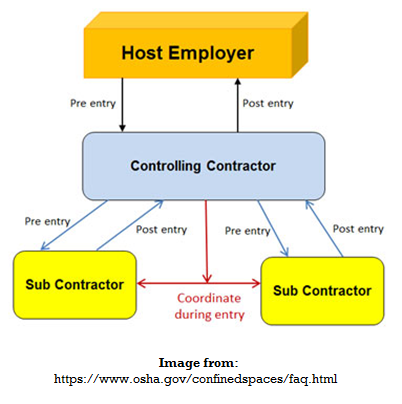KYLE MEINERT
Risk Advisor at HNI
Confined spaces have long been recognized as a large exposure in many industries. Most of this exposure, however, is controlled with proper planning.
To adapt the general industry guidance for construction, OSHA issued a new final rule that went effect August 3, 2015 with a full enforcement date of October 1, 2015. For more detail, look for Subpart AA in the 1926 CFR.
Let’s take a look at some information regarding the changes below.
1. Remind me again what a confined space is?
"Confined space" refers to a space which by design has limited openings for entry and exit, unfavorable natural ventilation which could contain or produce dangerous air contaminants, and which is not intended for continuous employee occupancy.
Confined spaces include, but are not limited to:
- storage tanks
- compartments of ships
- process vessels
- pits
- silos
- vats
- degreasers
- reaction vessels
- boilers
- ventilation and exhaust ducts
- sewers
- tunnels
- underground utility vaults
- pipelines
2. Are all confined spaces treated equally?
No. The safety world distinguishes confined spaces between non-permit required and permit required confined spaces.
OSHA uses the term "permit-required confined space" to describe a confined space that has one or more of the following characteristics:
- contains or has the potential to contain a hazardous atmosphere
- contains a material that has the potential to engulf an entrant
- has walls that converge inward or floors that slope downward and taper into a smaller area which could trap or asphyxiate an entrant
- contains any other recognized safety or health hazard, such as unguarded machinery, exposed live wires, or heat stress
3. Are there any similarities between the general industry and construction regulations on confined space?
Yes, Subpart AA was based off the general industry standard, so there are some core similarities.
Employers still face the task of:
- administering training for confined spaces
- identifying and controlling entry to confined spaces
- having a complete written policy that has been put into action
- and, in the case of the pivotal you know what hitting the fan, we have to provide a method for rescue with follow up emergency services
4. A confined space is a confined space is a confined space right? So the regulations are the same construction or general industry… right?
The new final rule does have some variation from the general industry standard.
First off, the new construction standard specifically covers all construction activities that occur within the confined space. Some examples of typical construction activities are:
- alteration or customization
- painting
- repair work
- general construction work
Additional considerations specific to the construction regulations state that as the employer we must have a designated competent person that is responsible for identifying and evaluating all confined spaces. We must also have continuous air and engulfment monitoring, have the ability to suspend a permit if hazards change that need to be re-assess, and be able to isolate physical hazards prior to entry if permits are not being used.
 Additionally, there must be communication from all levels of the work being completed. That communication is coordinated by the controlling contractor (rather than the host employer). See the conversation chart to the right) for a visual depicting this.
Additionally, there must be communication from all levels of the work being completed. That communication is coordinated by the controlling contractor (rather than the host employer). See the conversation chart to the right) for a visual depicting this.
Finally, a key change to the construction standard on confined spaces is that the employer will need to coordinate with the emergency agency responsible for rescue PRIOR to entry. This will allow the rescuing agency the ability to ensure that they will be available if needed during that time frame.
5. Wait… so I identify myself as a general industry company and so does OSHA, I don’t have to worry about this new standard then right?
Do you have confined spaces? If so, do you do any of the above mentioned construction defined work?
If yes, then you DO need to follow the construction confined spaces standard even if you are a general industry company.
If you have both general industry work and construction work being completed in the same confined space, you must follow the construction standard on confined spaces.
Have a question we didn't address?
Do you have a question about how the new regulations apply to your organization that we didn't get to? Need something clarified or help putting new practices into place? Contact your relationship manager, or let us know in the comments!
Related Posts
3 Key Takeaways from Last Week’s Behavior Based Safety Webinar
Auditing a Workplace Safety Manual: The Good, The Bad, & The Ugly
Summer Heat Safety: Declare WARS on Heat Illness!
Start with the Employee Experience for Better Workers Compensation Claims Management
How Medical Marijuana Insurance Issues Affect Your Work Comp Policies
.png?width=69&height=53&name=Acrisure%20Logo%20(White%20Horizontal).png)

